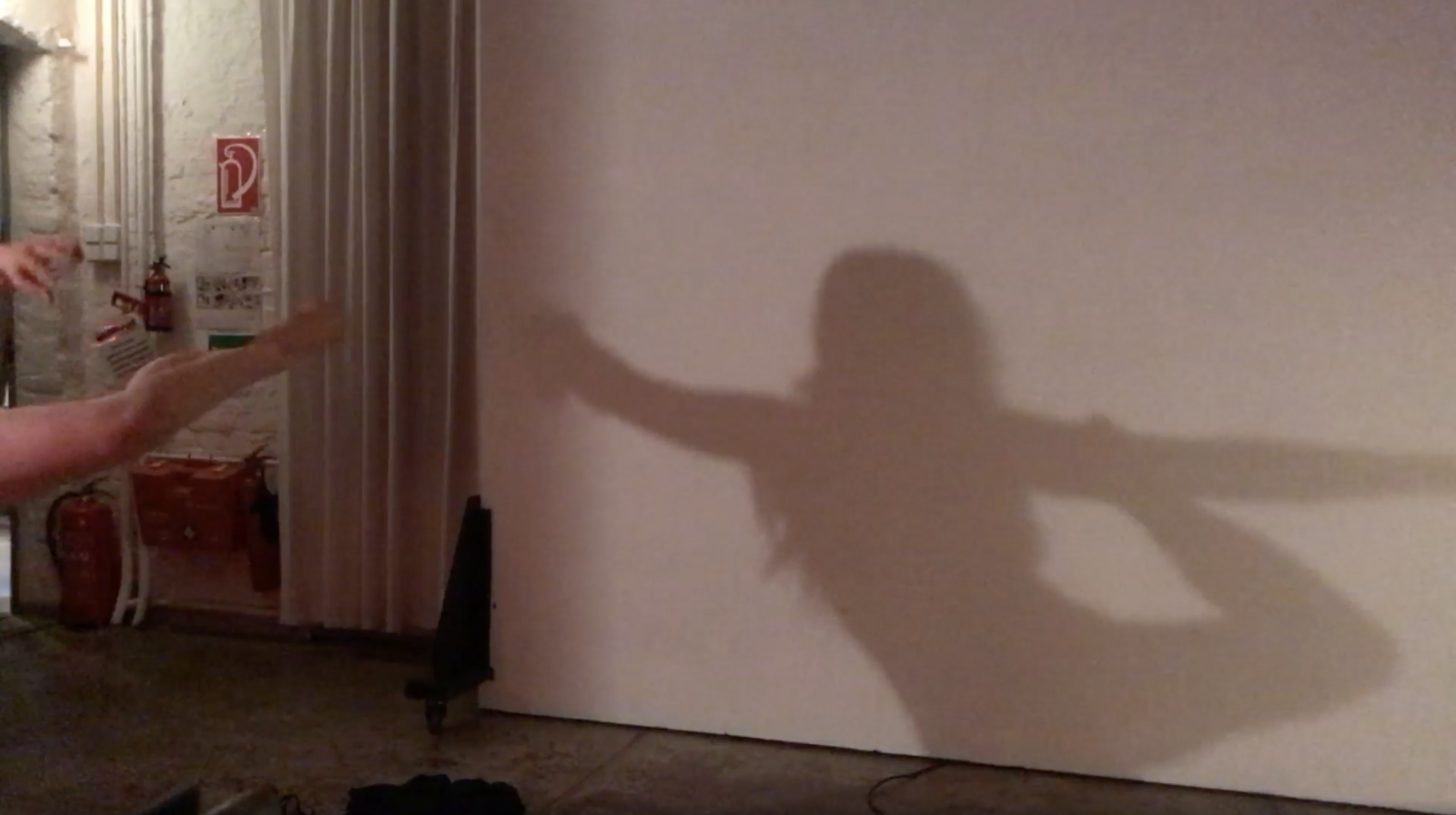
The House is on Fire Lets Move
The House was indeed on fire: it’s hard to describe what happened at Studio Weißensee on May 17, 2025. There was something underground, indie and folk about it, but also something of a chamber play. Fabiani Franca provokes at first with a seductive dance that simultaneously projects a fascinating shadow play onto a white screen and then switches to classical ballet exercises and modern expressive dance that seem to suggest forms of inner struggle, inner turmoil and other emotional states. Meanwhile, she is accompanied live by Emma Quinlan‘s voice and Julian Florez on guitar, before finally philosophizing about the imperative of the modal verb “to want” in an amusing – and for the audience, perhaps cathartic – conversation with Chat GPT. And the audience? They are amazed, join in and are secretly captivated – or perhaps even under her spell – throughout the entire event.
Choreographies of the mind
Fabiani Franca, SBW Berlin scholarship recipient and master’s student at FU Berlin, deals with affect regulation (emotion regulation or the influence on the type, intensity and duration of emotions) through dance theater methods, stages dance theater pieces about mental health and plans scientific evaluations including in the form of various workshops. As part of her social project “The House is on Fire Let’s Move: Choreographies of the Mind – Bridging the Worlds of Dancing, Theater, and Neuroscience”, she presented her first interdisciplinary performance, in which she collaborated with various artists (Emma Quinlan, Findus Music, Julian Florez and Dan K. Sigurd). Music, dance, theater and neuroscience seamlessly intertwine and the audience, whether they like it or not, becomes part of this interplay or performance.
Past and present collide
As mental health and the confrontations between “I” and “we” as well as past and present are important aspects of Fabiani’s project, during the performance she challenged each individual person in the audience not only to turn inward, reflect on their ancestors and family and in some way (fictitiously) communicate with them, but also to open up to others in the room at the same time. Suddenly, during the performance, Fabiani points to the slips of paper and pens scattered around the room and addresses the audience directly: “What would you want to ask your ancestors?” She begins writing herself and more and more audience members follow her. The slips of paper are thrown into a hat and handed out again. We silently read the answer of another, a stranger, and yet it is an intimate, even communal moment. Fabiani takes a piece of paper herself and quotes: “Actually, I don’t really know you. I wish I knew more about you.” A loud silence grips the audience. Maybe you’re not alone here after all?
One wolf, one pack, one melodic community
This question was certainly asked by some during the first part of the event: Concert Findus Music. During the live music performance, Findus already created this feeling of community, the juxtaposition of “I” versus “We”. Everyone was invited to howl like a wolf and thus sing along to the chorus of a song or “howl along” melodically. The audience – the individual participants – became wolves, a pack, a community and, here too, part of the performance itself.
Will I want to? (or Will ich wollen?)
Unexpectedly, the use of artificial intelligence rounded off the performance and Chat GPT reflected on “wanting”, “not wanting” and “willing to want”. The audience certainly wanted to be there that evening, but perhaps they were there more than they wanted to be. In any case, we here at SBW Berlin congratulate Fabiani on a successful performance and are already looking forward to her next production.
Would you like to read more exciting articles?
Find here in our blog section for more information about the SBW and (its) social commitment.





